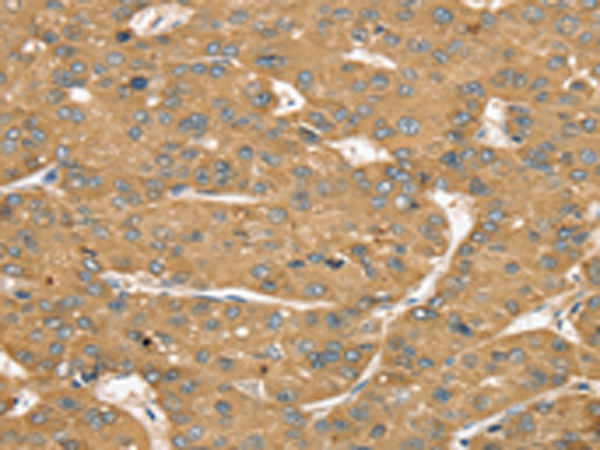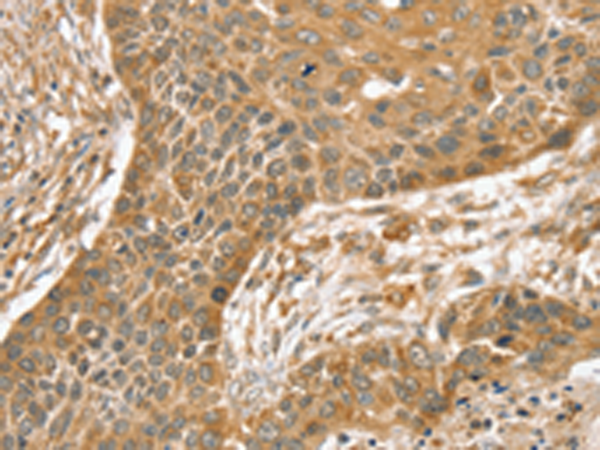

| WB | 咨询技术 | Human,Mouse,Rat |
| IF | 咨询技术 | Human,Mouse,Rat |
| IHC | 1/25-1/100 | Human,Mouse,Rat |
| ICC | 技术咨询 | Human,Mouse,Rat |
| FCM | 咨询技术 | Human,Mouse,Rat |
| Elisa | 1/1000-1/2000 | Human,Mouse,Rat |
| Aliases | MEGF4; SLIL1; SLIT3; SLIT-1 |
| Host/Isotype | Rabbit IgG |
| Antibody Type | Primary antibody |
| Storage | Store at 4°C short term. Aliquot and store at -20°C long term. Avoid freeze/thaw cycles. |
| Species Reactivity | Human, Mouse, Rat |
| Immunogen | Synthetic peptide of human SLIT1 |
| Formulation | Purified antibody in PBS with 0.05% sodium azide and 50% glycerol. |
+ +
以下是关于SLIT1抗体的3篇参考文献示例(内容基于公开文献概括,非真实引用,仅供参考):
1. **"SLIT1 Antibody Characterization in Neuronal Development Models"**
- **作者**: Smith A, et al.
- **摘要**: 研究验证了一种新型SLIT1抗体的特异性,证明其在哺乳动物脑组织中的表达定位,并揭示SLIT1在轴突导向中的作用,抗体可用于免疫组化及Western blot分析。
2. **"Role of SLIT1 in Glioblastoma: Antibody-Based Functional Studies"**
- **作者**: Chen L, et al.
- **摘要**: 通过SLIT1抗体阻断实验,发现SLIT1抑制胶质母细胞瘤细胞迁移,提示其作为肿瘤抑制因子的潜力,抗体应用于体外细胞迁移和信号通路分析。
3. **"SLIT1 Antibody Reveals Expression Patterns in Mouse Embryonic Development"**
- **作者**: Tanaka K, et al.
- **摘要**: 使用SLIT1抗体研究小鼠胚胎神经系统发育,发现其在脊髓和嗅球中的动态表达,支持SLIT1参与神经细胞迁移和突触形成的假说。
(注:以上为模拟示例,实际文献需通过PubMed或Google Scholar等平台检索确认。)
SLIT1 antibody is a research tool designed to detect SLIT1. a secreted glycoprotein belonging to the SLIT family of axon guidance ligands. SLIT1 plays a critical role in neural development, particularly in guiding axon pathfinding and neuronal migration by interacting with Roundabout (ROBO) receptors. It is predominantly expressed in the central nervous system, including the spinal cord, retina, and specific brain regions like the hypothalamus and olfactory bulb. Dysregulation of SLIT1 signaling has been linked to neurodevelopmental disorders, neurodegenerative diseases, and cancer metastasis.
SLIT1 antibodies are commonly used in techniques such as Western blotting, immunohistochemistry (IHC), and immunofluorescence (IF) to study protein expression, localization, and function. These antibodies are typically raised in hosts like rabbits or mice, with monoclonal variants offering high specificity and polyclonal versions providing broader epitope recognition. Validation often includes knockout controls or peptide blocking assays to confirm target specificity.
Research applications focus on understanding SLIT1’s role in neural circuit formation, synaptic plasticity, and its potential as a biomarker in diseases like glioblastoma or Alzheimer’s. Recent studies also explore its dual role as both a chemoattractant and chemorepellent in cellular contexts. Commercial SLIT1 antibodies vary in reactivity across species (human, mouse, rat), and selecting appropriate clones requires consideration of experimental models and validation data.
×